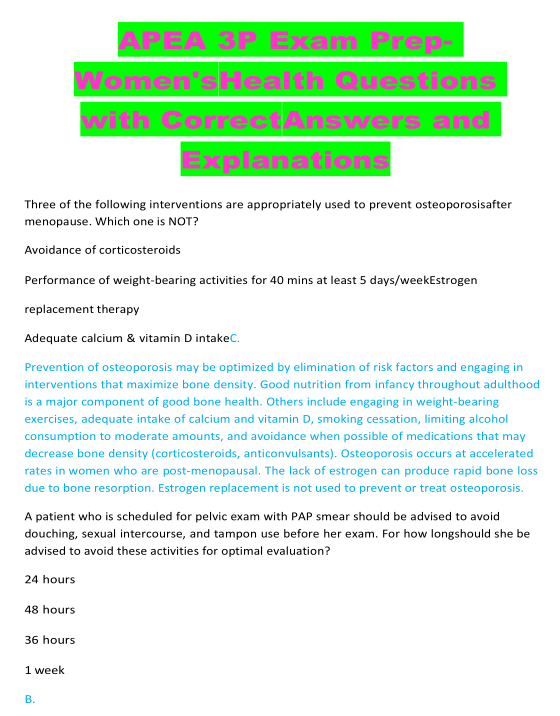Three of the following interventions are appropriately used to prevent osteoporosis after
menopause. Which one is NOT?
Avoidance of corticosteroids
Performance of weight-bearing activities for 40 mins at least 5 days/week Estrogen
replacement therapy
Adequate calcium & vitamin D intake C.
Prevention of osteoporosis may be optimized by elimination of risk factors and engaging in
interventions that maximize bone density. Good nutrition from infancy throughout adulthood
is a major component of good bone health. Others include engaging in weight-bearing
exercises, adequate intake of calcium and vitamin D, smoking cessation, limiting alcohol
consumption to moderate amounts, and avoidance when possible of medications that may
decrease bone density (corticosteroids, anticonvulsants). Osteoporosis occurs at accelerated
rates in women who are post-menopausal. The lack of estrogen can produce rapid bone loss
due to bone resorption. Estrogen replacement is not used to prevent or treat osteoporosis.
A patient who is scheduled for pelvic exam with PAP smear should be advised to avoid
douching, sexual intercourse, and tampon use before her exam. For how long should she be
advised to avoid these activities for optimal evaluation?
24 hours
48 hours
36 hours
1 week

